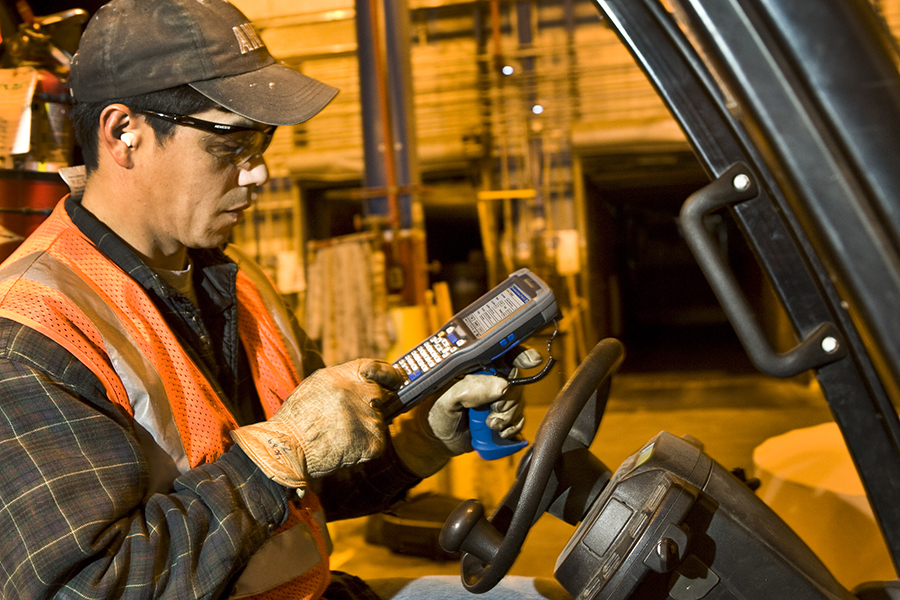For years, healthcare environments have been relying on specially designed devices made to help mitigate the risk of infection. Now the risk has transformed, and the most dangerous places that viruses could be lurking aren’t just found in hospitals. They can now be found in retail stores, warehouses, and any other place where people congregate for any amount of time.
Distribution centers and supply chain manufacturers must ramp up safety efforts by taking a page from the healthcare industry and implementing tools, policies and devices designed to reduce the spread of pathogens. Consider these tips when selecting (and keeping clean) the right mobile devices for your operation:
1. Consider Devices Made from Disinfectant-Ready Plastics
Some devices are made with special plastics that are designed to withstand strong cleaners and multiple cleanings without cracking or corroding. Make sure your tech stack includes the most rugged and disinfectant-ready devices for your applications. This will help extend the lifecycle of the device as well as keep reduce the spread of germs. Pay strict attention to the suggested cleaning and care instructions from the device manufacturer and implement a protocol that ensures all employees are cleaning devices according to best practices and at recommended intervals throughout the day.
2. Implement Anti-Microbial Products
There are devices on the market with anti-microbial properties. This essentially means that these products have silver-ion embedded right into the plastic on the device. Because silver impedes the growth of deadly organisms, it can reduce the risk of spreading infection from person to person via the device.
This additive has become increasingly popular, especially recently. You can find everything from screen protectors, to tablets, to mobile computers with silver ion embedded in the surface, so that your workers can effectively do their jobs while lowering the risk of germs spread.
3. Leverage UV Light Solutions
When UV light is used as a sanitizing solution, it can eliminate 99.9% of all germs. UV light solutions allow your operation to place smaller mobile devices, like Honeywell’s Dolphin CT60, inside a compartment that once shut, activates UV light to disinfect the device within minutes.
This solution is not only incredibly effective, but it also does all the sanitization work for the user. Employees get the peace of mind that the devices they are using are fully cleaned and sanitized 100% of the time, without having to clean the devices themselves.
4. Develop Cleaning and Disinfecting Guidelines
When it comes to cleaning and disinfecting your devices, it’s important that you develop a regular cleaning schedule and follow the recommended best practices for ensuring your devices are properly sanitized.
A standard microfiber cloth is ideal for wiping away fingerprints, surface grime, and smudges from your devices. Pathogens can live in the oil in these smudges and fingerprints, so cleaning them with a microfiber cloth can help reduce the transmission of germs, but it does not eliminate all bacteria or completely sanitize devices.
To completely disinfect your devices, you will need to consult the manufacturing guidelines for each individual device. Develop a regular disinfecting schedule and communicate instructions to your employees for when and how a device should be properly cleaned. Make this information available at the device’s charging station, and include instructions for both wiping down devices and thoroughly sanitizing them, as well as how often you should carry out each.
5. Promote Best Practices for Good Hygiene
Above all else, each employee must practice good personal hygiene to ensure everyone stays safe. Provide each worker with personal protective equipment, such as masks and gloves. It’s also important that they maintain a safe distance of at least six feet between employees.
Make sure your workers know the proper sanitary guidelines to follow. Everyone should be covering their mouths and noses whenever they cough or sneeze and h and washing should be carried out often. Scrub with soap and warm water for at least 20 seconds, and dry hands thoroughly with a disposable towel. If soap and water aren’t readily available, hand sanitizer can be substituted. Make sure you use a 60% alcohol-based hand sanitizer in between hand washings.
These best practices have been followed in healthcare environments for decades. Now that everyone, not just healthcare workers, needs to keep safety top-of-mind, we can all take a page out of the healthcare industry’s handbook and implement these same best practices for industrial environments.
Informs provides best-in-class solutions that can be easily cleaned and disinfected to help you mitigate the risk of virus spread and protect your workers. For more information, contact an expert at Informs today.


Recent Comments